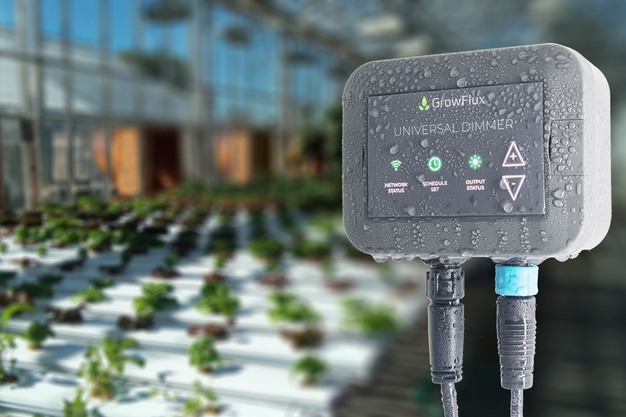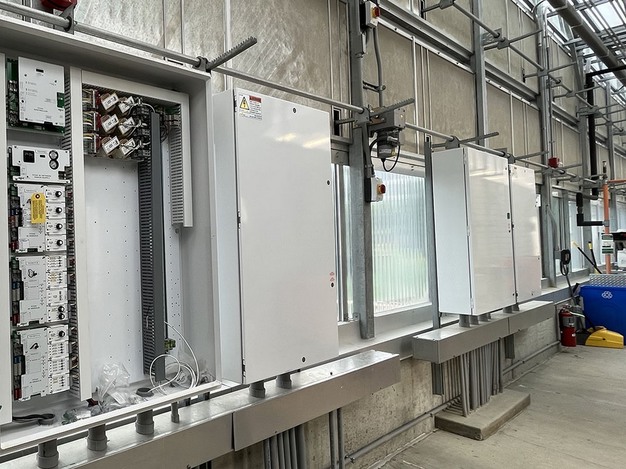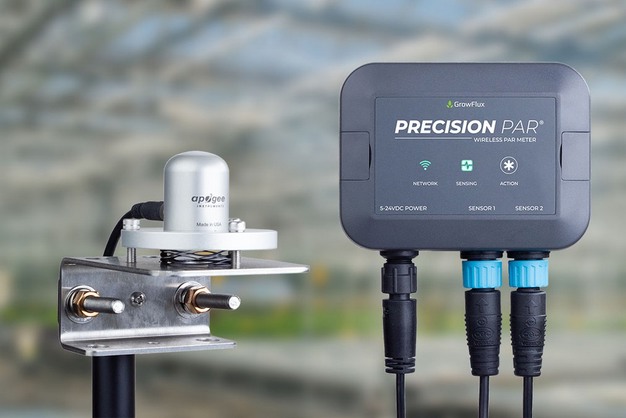Controlling lights in large greenhouses is traditionally a costly affair, demanding custom equipment and collaboration between engineers and lighting manufacturers. While modern LED lights offer flexible dimming control, control suppliers and growers remain challenged with getting this dimming signal to all of the lights reliably and cost-effectively. In response to these challenges, GrowFlux has introduced its Universal Dimmer.
"In traditional setups, interfacing the dimming signal across numerous lights in a greenhouse involves custom control cabinets with analog output modules," says Eric Eisele with GrowFlux. "These modules, designed for general automation in factory settings, emit a 0-10V signal. However, they are not specifically tailored to meet the challenges of horticultural lighting control, such as long cable lengths, connecting multiple devices to one control cable, and meeting the specialized signaling requirements for dim-to-off features on grow lights."
Conventional control cabinet for greenhouse lighting control and dimming
The Universal Dimmer developed by GrowFlux ensures a reliable connection of a 0-10V dimming interface to up to 50 lights from any major manufacturer while maintaining dependable dim-to-off control. "Our cabinetless lighting controls also integrate PAR sensing capabilities, responding to natural light in real time", adds Eric. The company offers hardware and software tools for control suppliers to interface these wireless controls with any climate computer.


GrowFlux's Precision PAR® wireless PAR sensor integrates with GrowFlux's wireless lighting controls.
Eric says that compared to fully wired control systems, cabinetless control systems built with their controls are less capital-intensive. "This is because custom cabinets with traditional 0-10V output modules, which are typically required, can be avoided. Properly implementing wireless controls on grow lights can eliminate electrical contactor panels from greenhouses, reducing capital costs and expediting project delivery timelines."
Initially installed with HPS lights lacking a control signal interface, contactor panels became common. "However, even with the introduction of LED lights with dimming interfaces, contactor panels persisted due to limited dimming control options that supported dim-to-off signaling for multiple lights."

GrowFlux collaborates closely with nearly every leading lighting brand, ensuring comprehensive hardware and software support for each light. "Given the variations in signaling and physical interconnection across different lights and manufacturers, our tools, including software profiles for each light, streamline energy reporting and enable precision control. Growers can rest assured that their entire horticultural lighting system will perform reliably due to this close collaboration with lighting vendors."
For more information:
GrowFlux
[email protected]
www.growflux.com










